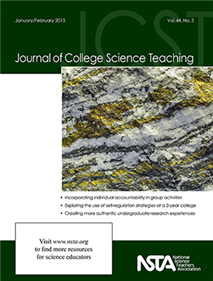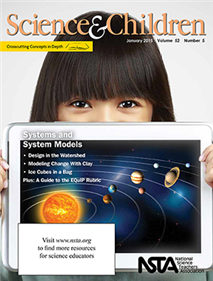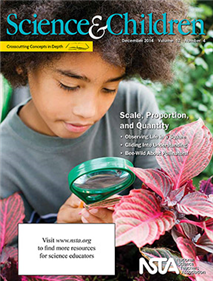All Resources
Journal Article
The Role of Online Homework in Low-Enrollment College Introductory Physics Courses
This study reveals the role of the online homework assignments as a predictor in the development of problem-solving skills for students taking introductory physics courses at a small liberal arts college. The results suggest that performance on onlin...
Journal Article
It Takes a Village to Make a Scientist: Reflections of a Faculty Learning Community
This article describes the many challenges in trying to create more authentic undergraduate student research experiences and the significant progress the authors have made in making such experiences more common for students....
Journal Article
Incorporating More Individual Accountability in Group Activities in General Chemistry
A modified model of cooperative learning known as the GIG model (for group-individual-group) was designed and implemented in a large enrollment freshman chemistry course. The goal of the model is to establish a cooperative environment while emphasizi...
Journal Article
A large research university developed a program that incorporates multiple forms of student-centered programming with a focus on research. Learning Environment and Academic Research Network (LEARN) is a living-learning community wherin first-year stu...
Journal Article
Changing College Majors: Does It Happen More in STEM and Do Grades Matter?
This study examines the within-field persistence rates of physical science/engineering students compared with those of students in life science, business, social science, education, and humanities....
Journal Article
Developing University and Community Partnerships: A Critical Piece of Successful Service Learning
This article talks about developing a partnership framework through purposeful communication with all partners for a successful service-learning project....
Journal Article
This article describes a teacher preparation program at a large Midwestern university that was modified to include a new science content course aimed at the need for successfully preparing elementary teachers to teach science in their classrooms....
Journal Article
This study looks at the results of implementing education research-based curricular reform that took place over seven years....
Journal Article
This articles highlights the teaching beliefs and classroom practices of a sample of science faculty with educational specialties (SFES) to promote the importance of understanding these attributes in faculty embedded within disciplinary departments i...
Journal Article
This study investigated how students in an urban 2-year college used self-regulation strategies in a General Chemistry I course and whether their use was correlated with both performance and the ability to correctly predict performance on a course ex...
Journal Article
Case Study: Grandma's TUM-my Trouble: A Case Study in Renal Physiology and Acid-Base Balance
This case study involves the role of the kidneys in regulating blood pH and electrolytes. Concepts related to pharmacology and therapeutics are also introduced....
Journal Article
A rubric to help implement the Next Generation Science Standards....
Journal Article
A paper airplane investigation highlights scientific and engineering practices....





